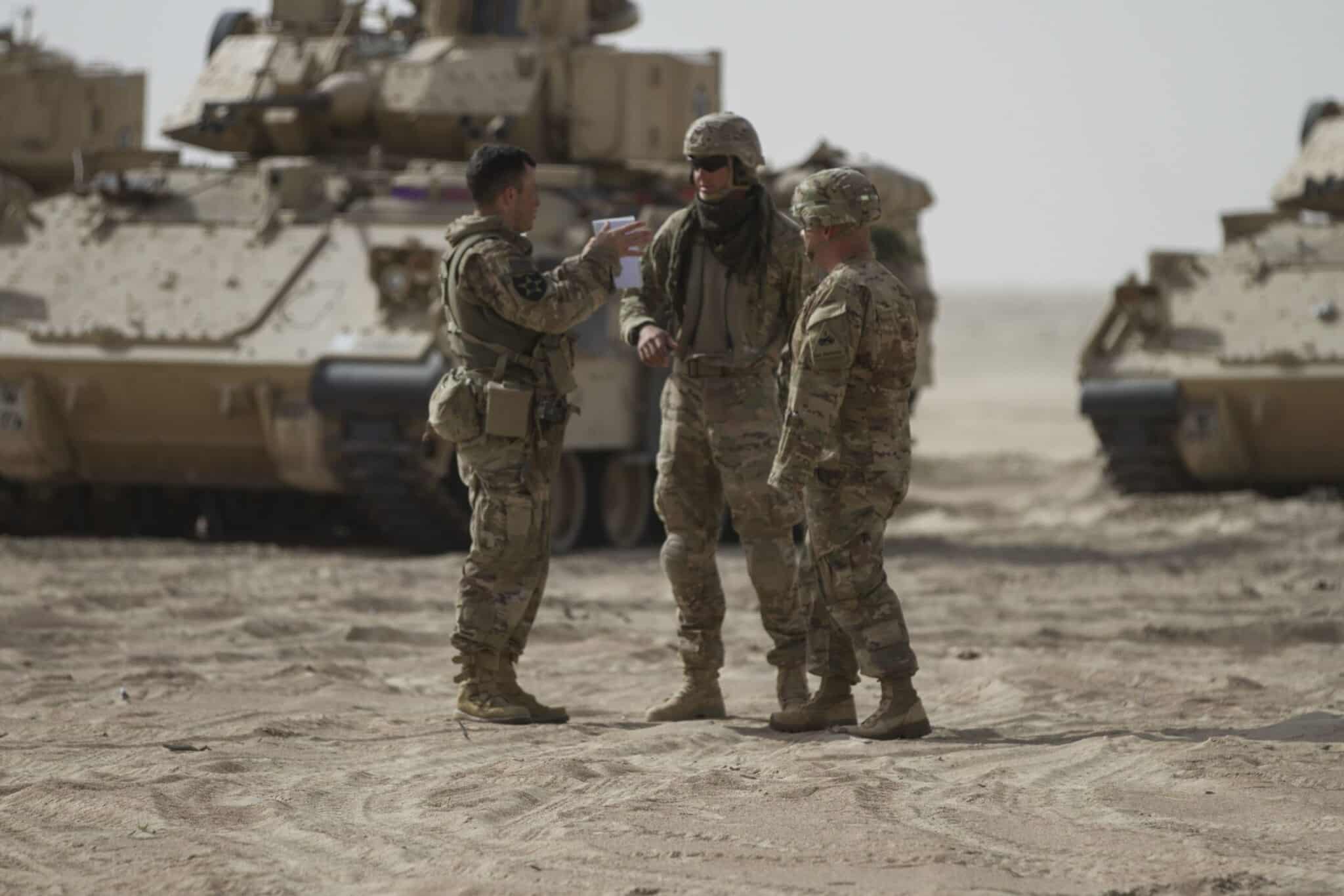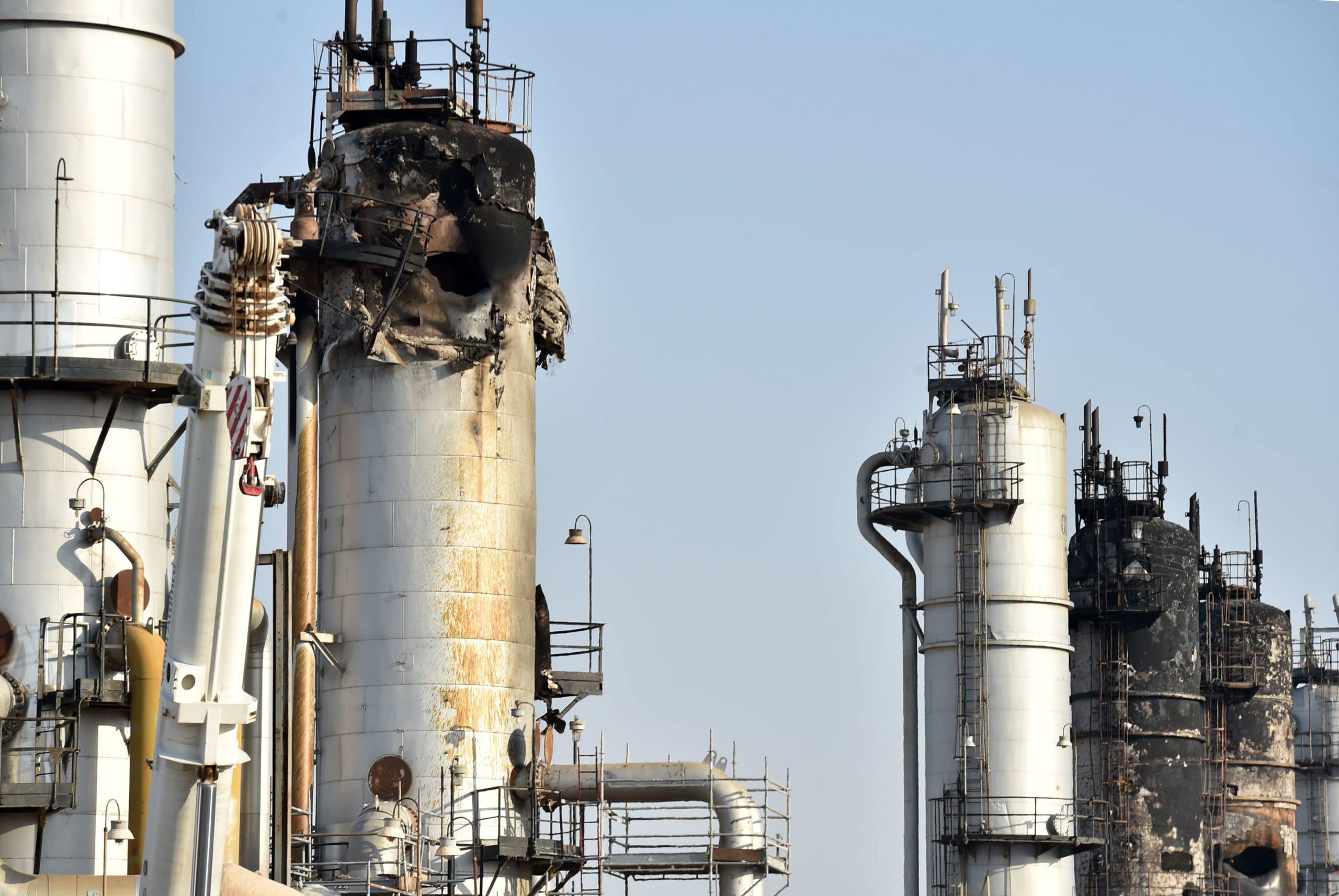December 15, 2020 | Defending Forward Monograph
Countering the Iranian Threat in the Persian Gulf
December 15, 2020 | Defending Forward Monograph
Countering the Iranian Threat in the Persian Gulf
Isolationists on the American right and left are taking advantage of understandable domestic exhaustion with conflicts in the Middle East to argue for devaluing the Persian Gulf among other U.S. interests while calling for a large-scale withdrawal of U.S. military forces from the region. Should the isolationists get their way, core U.S. interests in the Middle East will be unprotected, inviting more of the very thing they seek to avoid: military conflict in the Middle East.1
Consistent with the 2017 National Security Strategy2 and the 2018 NDS,3 the core U.S. interests in the Gulf are: 1) maintaining a favorable balance of power; 2) preventing the spread or acquisition of weapons of mass destruction; 3) targeting terrorists and their safe havens to prevent attacks on our homeland, interests, and allies; and 4) securing freedom of navigation in international waters.
The Islamic Republic threatens four core American interests in the Gulf. Over the past four decades, the regime in Iran has continued its quest for regional hegemony and a nuclear weapon. Tehran has prioritized its anti-Americanism and revolutionary foreign policy even under the most severe fiscal and public health conditions.4 In both word5 and deed,6 the regime threatens freedom of navigation in the Persian Gulf and Strait of Hormuz, through which nearly 20 percent of maritime oil supplies,7 vital to the global economy, traverse daily. Iran’s growing arsenal of missiles and rockets targets America’s regional allies, U.S. forces, and maritime traffic.8 Last year, Tehran downed a U.S. drone in international airspace, sabotaged oil tankers, and fired cruise missiles and drones that inflicted severe damage on a critical Saudi oil facility.9
Beijing and Moscow appear increasingly supportive of Tehran and in December 2019 partook in a trilateral naval exercise in the Indian Ocean.10 Independently, each of those countries is committed to undermining the U.S.-led international order, including American security partnerships in the Gulf.11 Russia is working to replace the United States as a leading supplier of military hardware to Gulf countries.12 China has not been afraid to use bribery to promote its arms sales or to expand trade, infrastructure, communications, and business networks.13 China’s reliance on Gulf oil gives Beijing further incentive to get involved in regional military and political affairs to fuel economic growth in China.
Finally, there is the asymmetric threat. Terrorist groups that operate in the broader Middle East continue to target U.S. interests both in the Gulf region and the homeland.14 Drawing on support from sponsors of terrorism or operating in jurisdictions of weak central authority, these groups seek to attack America’s interests and allies or even the American homeland, as al-Qaeda did on September 11, 2001.15 U.S. military pressure on terrorists in the wider Middle East has prevented another 9/11-style attack. A reduction of the U.S. military in the Middle East could give terrorists exactly the breathing space they seek to launch a new attack.
Despite these grave threats, a growing chorus of voices on both the left and right is arguing for a withdrawal of most U.S. troops from the region. A July 2020 report from the Quincy Institute, for example, suggests the United States should cease pursuing “military domination” (it is unclear who is calling for such an approach) and “significantly draw down its military presence in the region over a period of five to ten years.” Ignoring the lessons of the disastrous 2011 U.S. withdrawal from Iraq that heralded the rise of the Islamic State, the report calls for a drawdown “regardless of any potential stability milestones.”16
Such an approach would likely undercut Washington’s ability to contest and deter Iranian military aggression. Tehran continues to use the Islamic Revolutionary Guard Corps (IRGC) and its Quds Force to conduct terrorism and foment instability. One reason for this technique is Tehran’s relatively weak conventional military. If the United States removes too many combat capabilities from the region and signals an unwillingness to back its diplomatic priorities with military strength, it not only will fail to reduce IRGC terrorism, but could embolden Tehran to increase its conventional military aggression. The end of the UN arms embargo on Iran only exacerbates this concern.
A large-scale U.S. military withdrawal from the Gulf region might also put the Pentagon in the position of having to fight its way back into the region following major aggression by Tehran. As the Islamic Republic fields increasingly capable anti-access and area-denial capabilities, deploying U.S. military personnel back to the region could become more difficult.
In East Asia, the U.S. military is eager to establish increased combat capabilities closer to China. In the Gulf context, it would be short-sighted to relinquish such positions the Pentagon already enjoys near Iran and alongside one of the world’s most strategic waterways.
In direct support of the NDS’ principal priority of great power competition, a continued, right-sized U.S. military posture in the Gulf would also reduce the incentives for Gulf partners to look to Moscow and Beijing for defense partnerships. A large-scale withdrawal would cause Gulf partners to question the reliability of Washington’s security assurances, incentivizing them to turn increasingly to Moscow and Beijing.

Officers make a plan during Iron Union 18-6 in the United Arab Emirates on January 23, 2018. Iron Union is a recurring exercise focusing on combined arms, security, and staff operations, designed to strengthen military-to-military relations between U.S. and the UAE land forces. (Photo by Sergeant Thomas Crough)
The U.S. military cannot ignore partner military readiness and capability, either. Given the threats from Tehran and others, enhancing partner capability not only enables burden-sharing, 17 but also represents the only path to a safe and durable withdrawal of some U.S. forces from the region. Ignoring this important strategy would only increase the chances Washington would have to return in haste in the future – likely at a greater cost.18
The United States must also consider the impact of a withdrawal on our efforts to halt Iran’s efforts to destabilize the region through material19 and political support for violent non-state groups. An excessive reduction of U.S. forces in the Gulf would reduce Washington’s ability to detect, interdict, and expose weapons proliferation. That would make it easier for Tehran to conduct its operations directly or by proxy and to advance its arms proliferation strategy.20
Lastly, America’s transformation into a net energy exporter does not mean Washington no longer has an interest in the free flow of energy in the Gulf region. American energy consumers and producers remain vulnerable to what happens in the Gulf. A supply disruption anywhere that spikes the global price of oil impacts consumers and producers everywhere.
Energy flows in the region also impact great power competition. China, as well as key U.S. allies like Japan and South Korea, remains deeply dependent on Gulf energy supplies. The United States effectively controls the lines of communication that deliver that oil.
If competing with China is America’s number one challenge in the coming decades, voluntarily relinquishing control over such a chokepoint makes little sense. Such an unforced error by the United States would stoke fears of U.S. retrenchment among Gulf allies, potentially creating more economic, energy, and military opportunities in the region for Moscow and Beijing.
Suggesting that China take over policing this key maritime chokepoint, as some have done, is short-sighted.21 An authoritarian regime that aggressively pursues its narrow security, economic, and geopolitical aims via predatory tactics will not be committed to keeping waterways open for all actors.
Going forward, Washington should work with its Gulf partners to strengthen their air, land, and maritime intelligence, surveillance, and reconnaissance capabilities, with the goal of maximizing shared all-domain awareness of Tehran’s malign behavior in and around the Persian Gulf and Strait of Hormuz. Early detection of threats to freedom of navigation and mine warfare should be a priority.22
Interoperable, multilayered regional air and missile defense systems in the Gulf should also be a priority.23 The Islamic Republic possesses the largest arsenal of ballistic missiles in the Middle East24 and is increasingly willing to use it.25 Tehran is also enhancing its drone and cruise missile capabilities, as demonstrated by the September 2019 attack on Saudi oil facilities.26 Tehran’s short-range ballistic missiles can strike U.S. military bases and other Gulf targets with increasing accuracy. Protecting U.S. bases from the full range of threats requires the deployment of defensive capabilities, including Aegis ballistic missile destroyers, C-RAMS, Patriot batteries, and Terminal High-Altitude Air Defense (THAAD) systems as well as next-generation systems.

A damaged installation in Saudi Arabia’s Abqaiq oil processing plant is pictured on September 20, 2019. (Photo by Fayez Nureldine/AFP via Getty Images)
In conjunction with Gulf partners, Washington should work to implement recommendations from the Missile Defense Review calling for connecting sensors and shooters in partner nations.27 To reduce the burden on U.S. forces, Washington should expedite missile defense system sales to Gulf Cooperation Council (GCC) countries.28 This would contribute to a layered and integrated regional missile defense system.29 Washington should also help Gulf countries address lower-tier unmanned aerial threats from mortars, rockets, and drones.
Additionally, Washington should work with Gulf partners to strengthen the International Maritime Security Construct. While Bahrain was the only Gulf member of the Construct at the time of its founding, the Construct has since expanded to include Saudi Arabia and the United Arab Emirates.30 Washington should encourage other Gulf nations to join and contribute.
Such measures would deter and defeat potential threats in the Gulf before they materialize closer to home. Conversely, a large-scale withdrawal of U.S. military forces would undermine American national security, offering a significant geopolitical opportunity for adversaries such as China, Russia, Iran, and jihadist groups to exploit.
